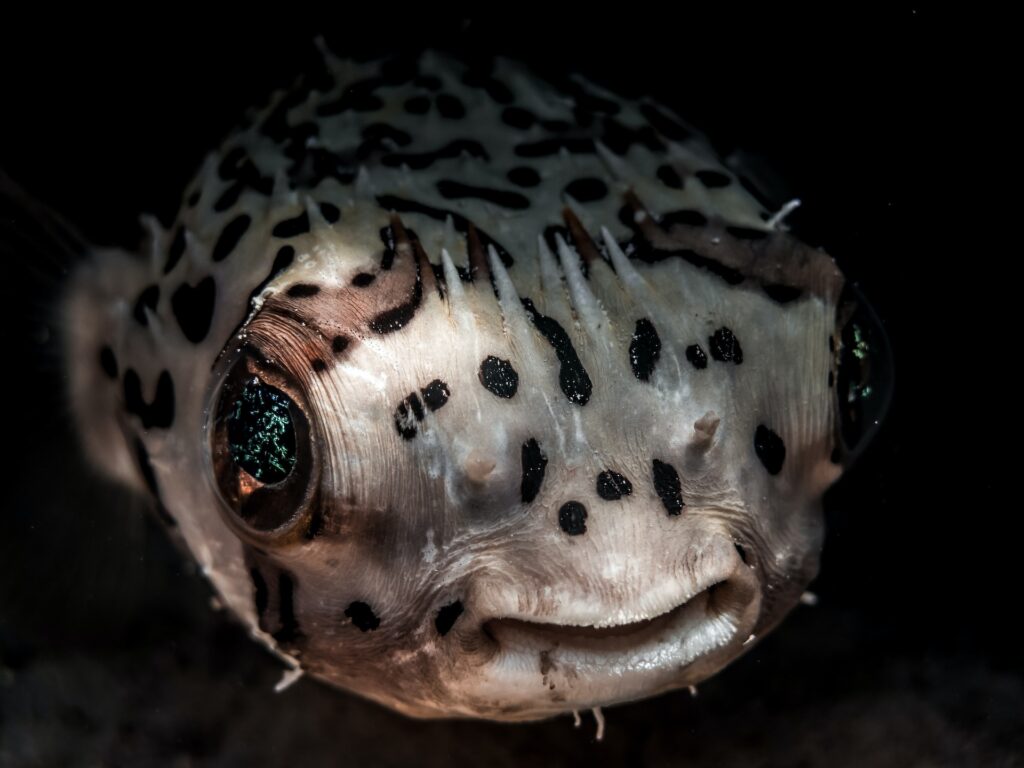A Dive into the Fascinating World of These Inflatable Marine Marvels

Beneath the waves, in the vast expanses of the world’s oceans, a peculiar and enchanting creature known as the pufferfish resides. With its unique ability to inflate like a balloon, the pufferfish has captivated the curiosity of marine enthusiasts and scientists alike. In this comprehensive guide, we’ll embark on a journey to uncover a myriad of interesting facts about pufferfish, exploring their extraordinary features, behaviors, and the intriguing mysteries that surround these underwater wonders.
The Art of Inflation
- Adaptive Defense Mechanism: Perhaps the most renowned characteristic of pufferfish is their ability to inflate themselves when threatened. This is a remarkable defense mechanism employed to deter predators by presenting a much larger and more challenging target.
- Flexible Stomach and Water Ingestion: Pufferfish achieve their distinctive inflated state by ingesting large amounts of water or air. They do this by expanding their flexible stomachs, allowing them to transform from a relatively compact size to a bloated, spherical shape.
- Dangerous Beauty: While the sight of an inflated pufferfish may seem whimsical, it serves as a warning to potential predators. Pufferfish carry potent toxins, primarily tetrodotoxin, in their tissues, making them a risky meal for those who dare to challenge their defensive display.
Pufferfish Species and Diversity
- Extensive Family: Pufferfish belong to the Tetraodontidae family, which includes over 120 different species. These species vary in size, coloration, and habitat, with representatives found in both saltwater and freshwater environments.
- Global Distribution: Pufferfish are found in tropical and subtropical waters worldwide. From the coral reefs of the Pacific and Indian Oceans to the freshwater rivers of South America, these adaptable creatures have established a diverse range of habitats.
- Varied Sizes: Pufferfish exhibit a wide range of sizes, from the smallest species, such as the dwarf or pea pufferfish (Carinotetraodon travancoricus), which measures only about an inch in length, to larger species like the Mbu puffer (Tetraodon mbu), which can grow up to two feet in length.
The Poisonous Power of Tetrodotoxin
- Lethal Defense Mechanism: Tetrodotoxin, found in pufferfish tissues, is a potent neurotoxin that can be lethal to predators and, unfortunately, to humans if consumed in sufficient quantities. Despite the risks, certain cultures, especially in Japan, have developed specialized techniques to prepare pufferfish, known as fugu, as a delicacy.
- Tetrodotoxin Production: The source of tetrodotoxin in pufferfish remains a subject of scientific interest. While it is believed that the toxin is produced by bacteria associated with the pufferfish, the exact mechanisms and relationships involved are still not fully understood.
- Selective Resistance: Some pufferfish species, like the rough-skinned newt, are resistant to tetrodotoxin and use it as a defense against predators. This resistance has sparked research interest in understanding the genetic basis behind the ability of certain organisms to withstand the deadly effects of the toxin.
Intricate Pufferfish Behaviors
- Elaborate Courtship Displays: Pufferfish engage in elaborate courtship displays to attract mates. Males, adorned with vibrant colors and intricate patterns, create geometric formations on the seafloor to entice females. This intricate dance is a testament to the complexity of pufferfish courtship rituals.
- Tool Use: In a surprising display of intelligence, some species of pufferfish have been observed using tools. For instance, the veined octopus has been observed carrying coconut shell halves to create protective shelters, and pufferfish have been seen using shells and other objects for both shelter and as tools to manipulate their surroundings.
- Migratory Patterns: Pufferfish exhibit various migratory patterns, with some species undertaking extensive journeys across oceans. Understanding these migration patterns is crucial for conservation efforts, as it allows scientists to identify key areas for protection and management.
Pufferfish in Popular Culture
- Aquarium Allure: Due to their unique appearance and intriguing behaviors, certain species of pufferfish, such as the figure-eight puffer (Tetraodon biocellatus), have become popular choices for home aquariums. Their captivating presence and ability to interact with their environment make them a favorite among aquarium enthusiasts.
- Cultural Significance: Pufferfish, particularly in Japanese culture, hold cultural significance beyond their potential danger. The art of preparing and consuming fugu has been elevated to a culinary tradition that requires specialized training and licensing.
- Artistic Inspiration: The distinctive appearance of pufferfish has inspired artists, writers, and filmmakers. Their enchanting features often make appearances in various forms of art, literature, and cinema, contributing to their mystique.
Conservation Challenges
- Habitat Destruction: Like many marine species, pufferfish face threats from habitat destruction due to factors such as pollution, coastal development, and climate change. Preserving their natural habitats is essential for maintaining healthy populations.
- Overfishing and Poaching: Pufferfish are often targeted for the aquarium trade and, unfortunately, for their meat in certain regions. Overfishing and poaching can have detrimental effects on their populations, emphasizing the need for sustainable fishing practices and conservation efforts.
- Research for Conservation: Understanding the biology, behaviors, and ecological roles of pufferfish is crucial for effective conservation. Ongoing research helps identify threats, develop conservation strategies, and raise awareness about the importance of preserving these unique marine creatures.
Guardians of the Ocean Realm
In conclusion, pufferfish are extraordinary creatures that embody the wonders of marine biodiversity. Their ability to inflate, coupled with their intricate behaviors, diverse species, and cultural significance, paints a captivating portrait of these underwater marvels. As stewards of the ocean realm, it is our responsibility to appreciate, conserve, and safeguard the habitats of these enchanting pufferfish, ensuring that future generations can continue to marvel at the fascinating mysteries of the deep blue sea.

LEAVE A REPLY